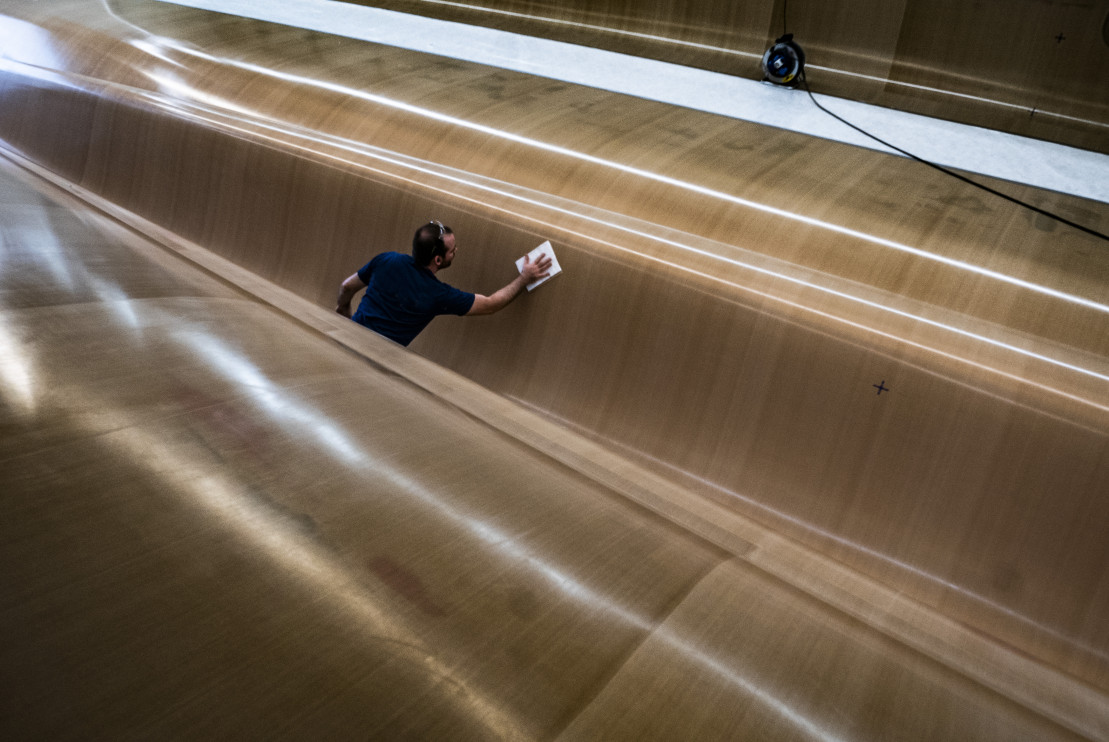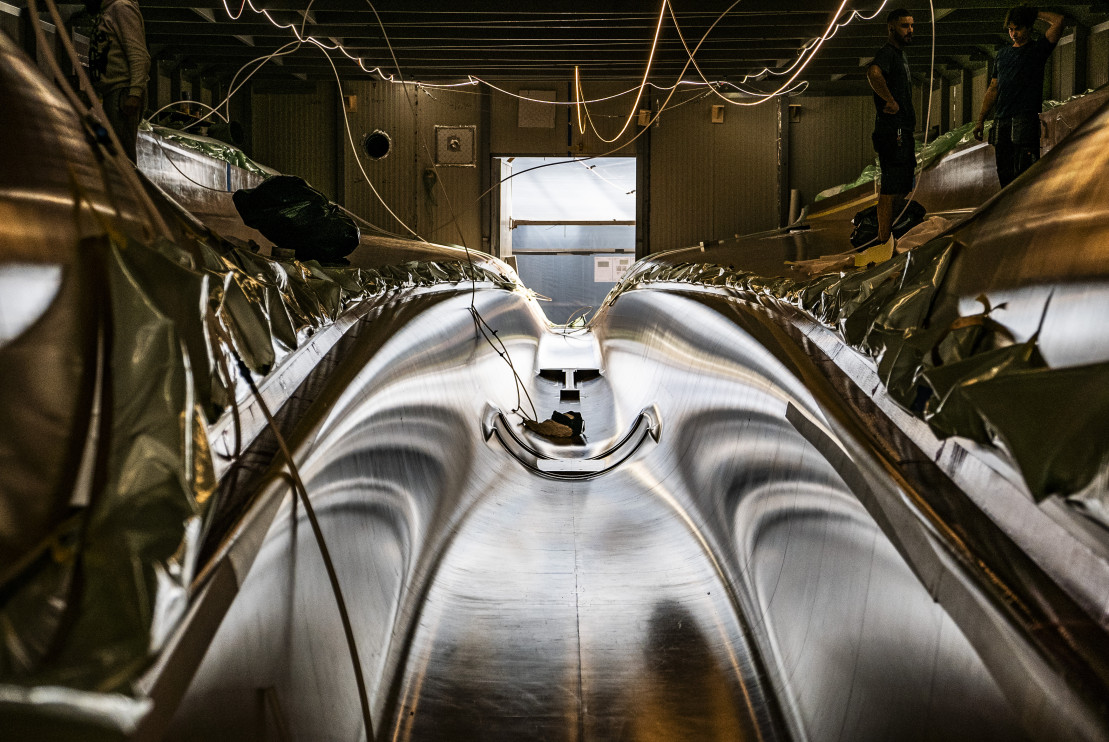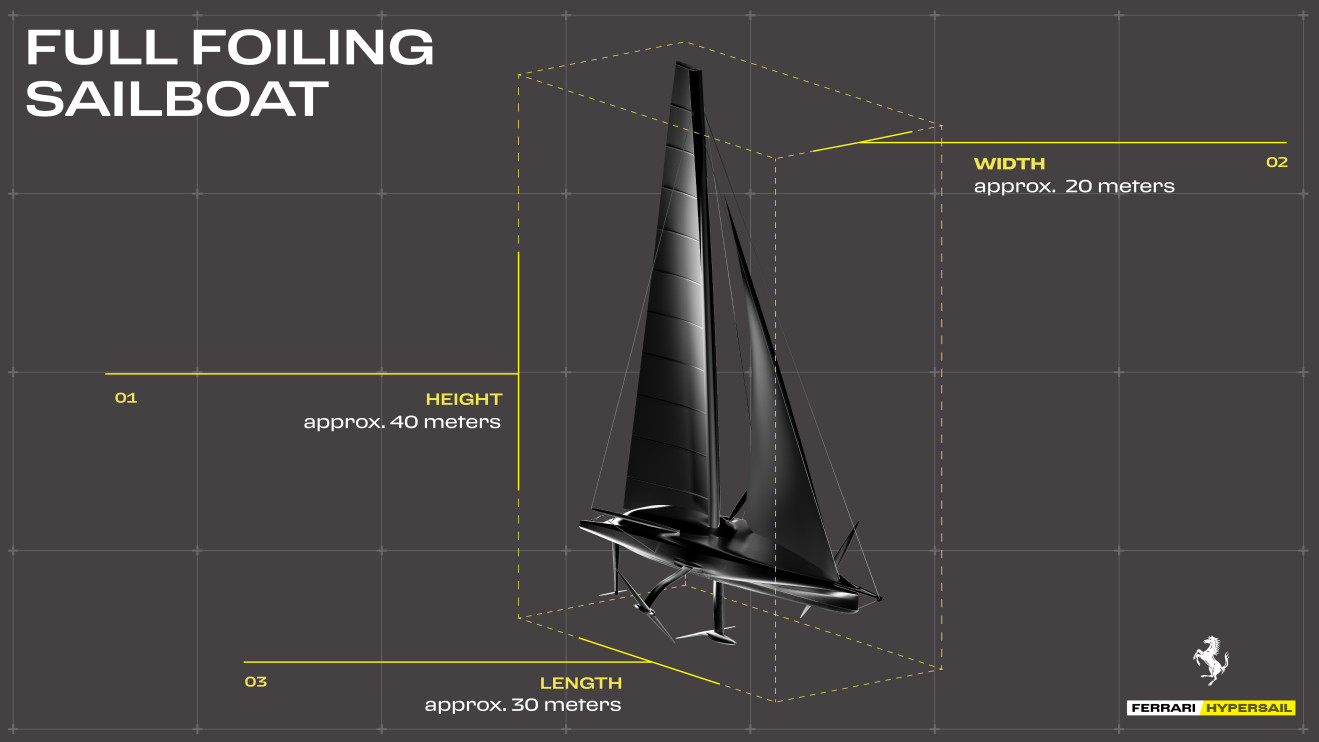Ferrari Creates a Levitating Colossus Powered by Wind

Ferrari has unveiled its new project, the Hypersail. This isn't a supercar with a roaring engine under the hood, but a wind-powered ocean-going yacht. The boat's name, Hypersail, is a nod to Ferrari's racing heritage and its endurance hypercar, the 499P, which won Le Mans three years in a row.
The team led by Giovanni Sodini aims to create a sailing -focused research and development platform with this 100-foot boat .
The know-how needed to explore new technologies and push the boundaries of innovation comes from Ferrari's extensive body of racing knowledge and experience. Four-wheel-drive cornering experts are actively involved in the Hypersail's design and testing process . The innovations are so numerous that Ferrari has filed nine patent applications and is working on six more.
 Ferrari Hypersail / press materials
Ferrari Hypersail / press materialsThe yacht's designer is renowned naval architect Guillaume Verdier. His groundbreaking design utilizes a hydrofoil, a special "art of flight." The three wings attached to the hull are invisible when the yacht is moored in a marina. Once the structure catches the wind and gains speed, the hydrodynamic wings begin to generate lift, pushing the main hull above the water's surface.
 Ferrari Hypersail / press materials
Ferrari Hypersail / press materialsThe sight of such a boat is breathtaking – a levitating colossus slicing the water with three scalpels (in the case of a Hypersail). The result is significantly less water resistance against the hull, lower energy consumption (in the case of motor-powered boats), and higher top speed.
Fans of classic sailing, however, emphasize that this type of yacht requires much more experience from the helmsman and special training.
 Ferrari Hypersail / press materials
Ferrari Hypersail / press materialsThe designers of Ferrari's ocean racing car have gone to great lengths to ensure the Ferrari Hypersail is powered entirely by renewable energy sources —including wind, solar, and kinetic energy. There will be no internal combustion engine on board, and all the energy required to operate the steering and propulsion systems for the hydrofoils, keel, and rudder, as well as all onboard computers and instruments, must be generated autonomously while underway. This necessitated the optimization of efficient energy management for all the individual components that comprise this nautical marvel.
 Ferrari Hypersail / press materials
Ferrari Hypersail / press materialsThe yacht, currently under construction in Italy, will be launched for testing in 2026.





